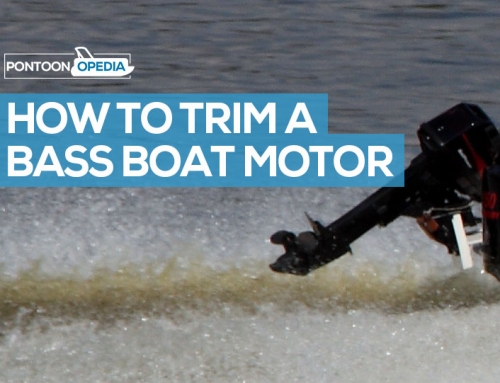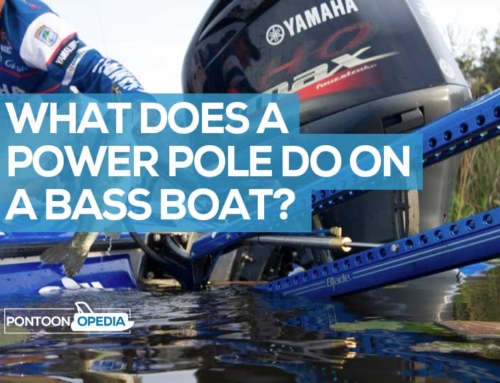After my friend made the very expensive purchase of a bass boat, I implored him to look up winterization techniques. I wanted to make sure he knew how to properly maintain it and keep it in tip top condition for the winter. I did a little research for him to find out how he could winterize his bass boat and here are some of the notes I made.
How can you winterize a bass boat? To winterize a bass boat, you will need to test the motor, remove various pieces of equipment, apply lubrication, make sure the oil tank is full, and proceed to store the boat in a safe place.
Bass boat winterization tips
For those of us who live in colder climates, there are some additional precautions that must be taken when it comes to keeping up with the quality of our bass boats. You can read those in more depth below.
It should be enough for you to be getting on with if you have even a small amount of boating experience. Here’s that easy guide on how to winterize your bass boat before storing it for the off-season.
How to winterize a bass boat
Before you can put your bass boat away for the winter, you will need to go through a series of steps called winterizing.
Through this process, you can ensure that all components of your bass boat are safely protected, and nothing is left to chance in terms of damage whilst are not using it.
Even though there are a lot of steps to follow before you are able to put your boat away for the winter, it will be worth it when you pull it out again in the summertime.
Take a look at the steps outlined below and keep reading for a more detailed description on what you need to do while winterizing your bass boat.
The simple steps in bass boat winterization
- Fill the gas tank.
- Add gas stabilizer to the tank.
- Run the motor for about 10 minutes to check gas.
- Spray fogging oil to fog the engine.
- Remove spark plugs and spray more fogging oil (a few seconds each).
- Remove prop and check.
- Grease the shaft before replacing the prop.
- Check lower unit lube for water, empty if needed.
- Grease fitting and apply lubrication to all points.
- Fill the oil tank all the way up.
- Take out all batteries and place them inside.
- Check livewells and pumps for water.
- Disconnect and drain water pressure line.
- Check tire pressure on trailer.
- Check trailer hubs and add grease if needed.
- Take everything else off of the boat.
- Move motor into downward position for proper draining.
- Wash the exterior of the boat and the motor, wax the entire thing before storage.
First and foremost, you will need to fill up the gas tank, or gas tanks, on your bass boat. The tank should be all the way full before you add gas stabilizer to the same place.
Once this has been done, you will need to run the motor for about 10 minutes in order to make sure that the gas is stabilized. This could take up to 15 minutes but should not go any longer than that.
Before you turn the motor off, spray some fogging oil into the engine in order to fog it. To make this process easier, you can follow the instructions that are outlined on the packaging of the can.
You will know that you have properly fogged the engine when you see a large amount of smoke coming up from the area you are spraying.
Next, the spark plugs will need to be removed and sprayed with fogging oil into the holes as well. Each of these holes should be sprayed for just a few seconds each. Put the plugs back into the holes and make sure that the kill switch is disconnected.
The prop should then be removed and checked for anything that could be behind it, such as a fishing line. Before you put it back on, apply some grease to the area of the shaft.
It is important that you check the lower unit tube for any water that could be stuck inside of it. If you leave any liquids inside anywhere on the boat during the winter, they could freeze and cause significant damage to your vehicle.
Upon checking inside of the lower unit tube, you should complete any replacements as necessary. You will know if there is water inside of the tube if there is a substance that looks like milk, meaning that the water has combined itself with the oil present in the tube.
According to the owner’s manual of your bass boat, you will need to apply grease and lubrication to all of the necessary points of your watercraft.
Additionally, all batteries should be removed from anywhere in the boat and stored inside where they can not incur any weather damage.
Check all of your live wells, bilge pumps, and virtually any opening on the exterior or interior of the boat for water and other liquids that could be detrimental. Remove them as needed and make any necessary replacements at this time.
The water pressure line should also be disconnected and drained to prevent any freezing as well.
On the trailer that is connected to your boat, you will need to make sure that the tire pressure is at the correct level. This should be the maximum level of pressure for the best results.
Look into the hubs of the trailer as well and make sure that they are properly lubricated. If not, you will need to apply some grease to the surface.
The final steps of winterizing a bass boat include removing everything from the boat that is outstanding and ensuring that the motor is facing downward for proper drainage of any water or liquids.
Lastly, you will need to care for the exterior of the boat by cleaning all around it, both outside and inside. This can be done with a boat cleaner or a homemade solution of soap and water.
Once this is done and the entire surface has been dried, you will need to put a clean coat of wax all over the outside to preserve it. If the motor needs it, you can add a coat of wax to that as well.
Some more winterizing tips
Along with the necessary steps that were outlined above for winterizing a bass boat, there are a few more simple tips and tricks that will help you do an even better job.
- Prop open all compartments for proper circulation.
- Use antifreeze for live wells and pumps to be safe.
- Take wires from battery and add a cable tie to organize them.
- Use wooden blocks for trailer to prevent wear and tear to tires.
Before leaving your bass boat in the designated storage space for the winter, you will want to prop open all of the compartments for proper circulation.
This can be done with a small wooden block or something similar, such as styrofoam.
Basically, anything you can use to keep these compartments slightly opened without damaging the exterior of the boat or leaving any marks will work for this purpose. In doing this, the areas inside of the openings will be properly circulated while being stored.
In addition, you can use a can of antifreeze for all of the live wells, pumps, and any other tubes or openings. This will help you make sure that there is no water or other liquid inside of these areas. To do this, simply spray the antifreeze into the area.
When you are removing the batteries from the boat, you can take the wires out of them and use them for storage. This can be done by using a cable tie to secure the batteries in organized bunches together.
Along with ensuring that the batteries are properly and safely stored, this action will help you to quickly locate which batteries go where on the boat when it is time to reassemble all of the parts.
For the trailer in particular, you can use wooden blocks on the bottom to prevent wear and tear on the tires. Instead of letting all of the weight rest on the tires themselves, the blocks will serve as a protective layer between the tires and the ground.
How much does it cost to have your boat winterized for you?
If you would rather not go through the trouble of winterizing your boat all on your own, you can have a professional do it for you in a shop. The approximate cost of this service will be about $300.
The last word…
If you love your bass boats, then check out these amazing bass boat wraps that I found on the Internet and collated into one handy place. I also wrote a guide on what to call your bass boat if you want to give yours a name that will stand out from the crowd.






